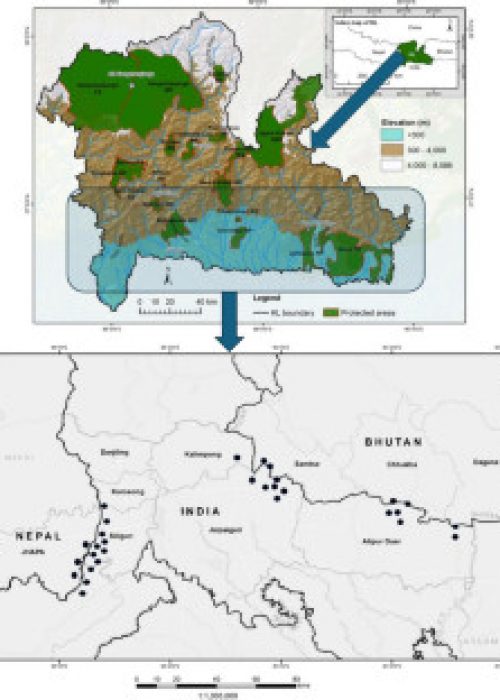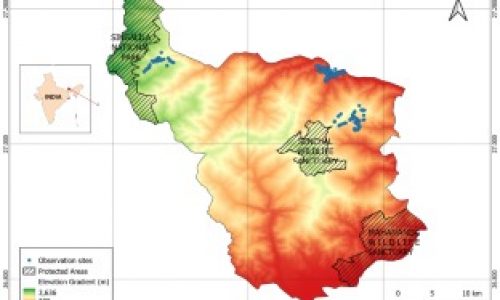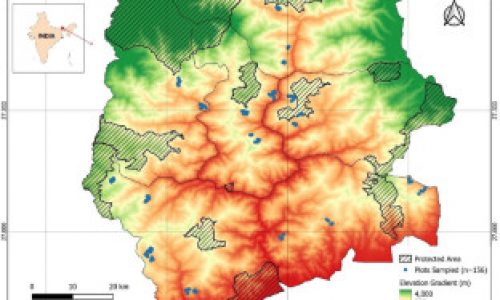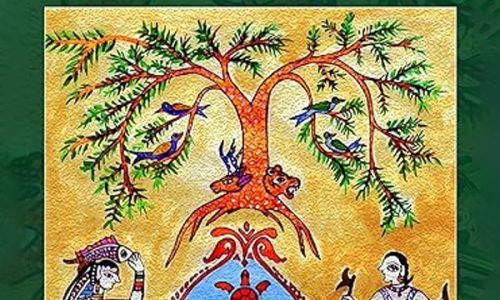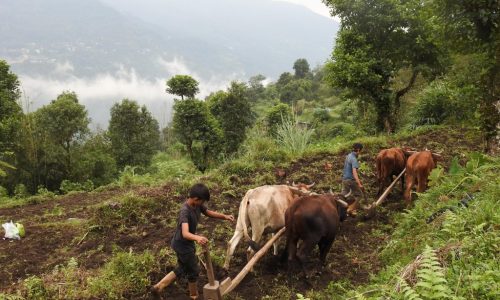Kesang Wangchuk, Janita Gurung, Sanjeeb Pradhan, Namgay Wangchuk, Kencho Rigzin & Sarala Khaling
Biodiversity and Conservation | August 2, 2024
Studies on human-elephant interactions are typically confined to a single country. Since elephants traverse international boundaries, it is critical to comprehend human-elephant interactions along their migration routes and recognize the significance of conserving these animals. A rapid appraisal was conducted to primarily understand the human-elephant dynamics in the transboundary lowlands of the Kangchenjunga landscape, encompassing regions of Bhutan, India, and Nepal, and highlight community-identified options for coexistence between humans and elephants in the shared landscape. Elephant populations in the transboundary landscape faced significant threats due to habitat loss and fragmentation as a result of increasing human settlements, agriculture, and infrastructure development.

